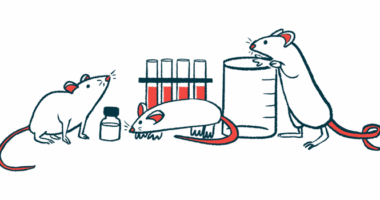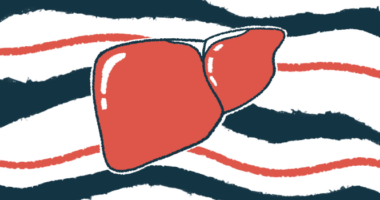FDA to review linerixibat for PBC-related itching
Treatment aims to block protein, reduce bile buildup

The U.S. Food and Drug Administration (FDA) has accepted for review GSK’s application seeking the approval of its oral treatment linerixibat for intense itching, or pruritus, associated with primary biliary cholangitis (PBC).
The agency’s review team will examine data GSK filed with the new drug application (NDA) and decide whether to approve or reject linerixibat. A decision is expected by March 24, 2026.
“The FDA’s acceptance of this file is an important milestone in the development of linerixibat,” Kaivan Khavandi, MD, PhD, global head of research and development in respiratory, immunology and inflammation at GSK, said in a company press release.
PBC is a chronic form of cholangitis, an inflammation of the ducts that carry the digestive fluid bile from the liver, where it is produced, into the intestines. As a result, bile flow is impaired (a condition called cholestasis), and bile can build up in the liver, damaging the organ, and leak into the bloodstream, causing pruritus and other symptoms.´
Cholestatic pruritis affects up to 81% of PBC patients, and can hurt their quality of life. It is often worse at night, interfering with sleep.
PBC itching ‘debilitating’
“We believe that linerixibat has the potential to make a difference in the lives of patients living with relentless itch associated with PBC and its related sleep interference,” Khavandi said. “These are debilitating symptoms which currently have very limited treatment options.”
Linerixibat is designed to block a protein called ileal bile acid transporter (IBAT), which normally helps recycle bile by moving it from the intestines and back to the liver. By blocking IBAT, linerixibat is expected to increase the amount of bile excreted in feces, thereby reducing its buildup in the liver and the bloodstream.
The NDA is supported by positive results from a Phase 3 clinical trial called GLISTEN (NCT04950127), which met its main goal of showing that linerixibat was more effective than a placebo in reducing pruritus over 24 weeks (nearly six months) in adults with PBC.
The trial involved 238 patients with moderate to severe pruritus who were randomly assigned to receive either linerixibat (40 mg twice daily) or a placebo for 24 weeks. Between 44% and 50% of participants in each group were taking other medications for pruritus.
The main goal was assessed using a 0-10 rating scale for worst monthly itch, with 0 indicating no itch and 10 the worst imaginable itch. After six months, monthly itch scores were significantly lower with linerixibat than with the placebo, by an average of 0.72 points.
Significant differences between the two groups were observed as early as two weeks, meeting one of the study’s key secondary goals. After two weeks, monthly itch scores were an average of 0.71 points lower in patients treated with linerixibat.
Other key secondary goals included the proportion of participants who had a clinically meaningful reduction of at least three points in their itch scores, which was significantly higher in the linerixibat group (56% vs. 43%).
Linerixibat-treated patients also scored significantly lower in monthly sleep scores over 24 weeks, by an average of 0.53 points, attaining another key secondary goal. Itch-related sleep problems were assessed using a 0-10 rating scale, with zero indicating no sleep interference and 10 complete sleep interference.
A greater proportion of people in the linerixibat group reported no itch at week 24 relative to those on the placebo (21% vs. 9%).
After completing this part of the study, participants either continued to receive their assigned treatment or switched to the alternate one for an additional eight weeks (about two months).
Those who switched to linerixibat experienced a pronounced reduction in itch scores as early as two weeks, consistent with results from the study’s first part. In contrast, those who crossed over to the placebo experienced an increase in itch scores. In both cases, average itch scores remained generally stable for the next six weeks.
Linerixibat was generally safe and well tolerated, with the most common side effect being diarrhea (61%). Of the 119 participants who started the trial on linerixibat, 17 (14%) discontinued the treatment due to adverse events. In five (4%), this was due to diarrhea.
Linerixibat is available outside clinical trials on case-by-case basis as part of a compassionate use program (NCT05448170). This program provides a mechanism to supply linerixibat to eligible adults with PBC-related itching who are at high risk of serious complications and have no suitable treatment options left.







